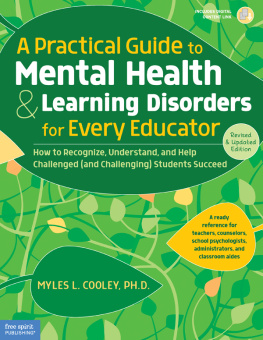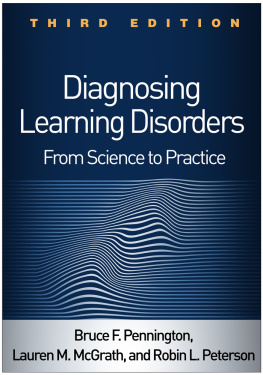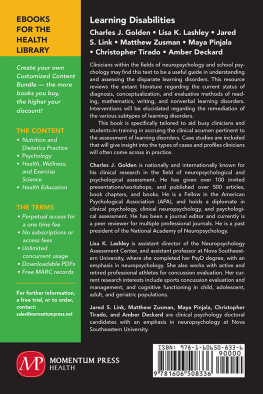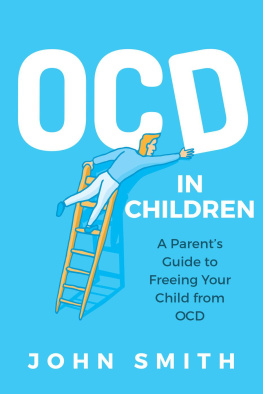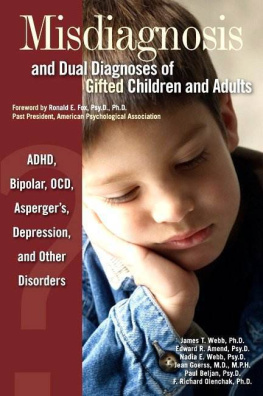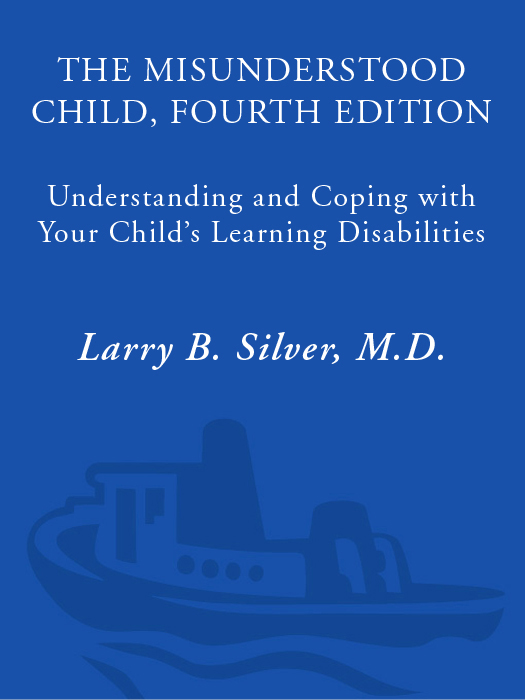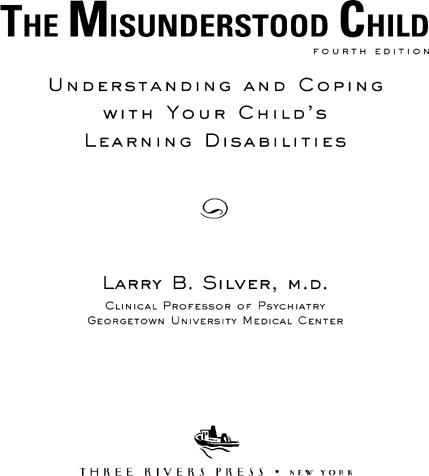PREFACE TO THE FOURTH EDITION
When I wrote the first edition of this book in 1984, public school programs for children and adolescents with learning disabilities were reasonably strong. I focused on the role of the parents and family in helping the affected child. In 1991, when I wrote the second edition, budget cuts had already begun to curtail the services provided to students with learning disabilities. So I stressed even more the need for parents to be informed consumers and assertive advocates. It was harder to get what each student needed, and the most knowledgeable parents were most likely to succeed.
The third edition was fully updated. I added new information based on ten very productive years of research, and there was a different tone in many sections of the book. The budget cuts to school systems had had a significant impact across public education in the quality and quantity of education provided. For those with special needs, the budget cuts were even greater. For those with special needs who had no visible evidence of a disabilitylike children and adolescents with learning disabilities, our childrenthe budget cuts hit the hardest. School systems could not avoid helping a student who was visually impaired or hearing-impaired or who was in a wheelchair. Nor could they avoid helping seriously emotionally disturbed children. But our children look normal; thus, it was easier to create a philosophy that justified providing fewer services. Many students with these special needs were placed in a general education classroom with minimal services and often with a teacher who was not trained or experienced to address these needs. Such an approach was referred to as inclusion. The concept was to allow these students to experience the normal curriculum and to learn better social skills by being with the general school population. Yes, this approach made balancing the special education budget easier; however, too many of our students did not survive in this setting. For these students, the lack of a teacher trained in special education and the lack of adequate support services resulted in failure. Assertive and informed parents had the best chance of getting the help their family member needed.
Why, now, a fourth edition? First, there is much new information based on very active and exciting research both in education and in the basic sciences. There is new information on identification and on the best practices for addressing specific disabilities. Brain research has been informative and convincing in showing the neurologic bases for learning disabilities. These studies have also clarified the reasons for specific disabilities and the types of interventions that would be most successful. We now have a strong scientific basis for establishing that learning disabilities are neurologically based. What is needed are highly qualified teachers using scientifically proven best practices for interventions.
But despite all of these advances, most individuals with learning disabilities face the worst of times. Budget cuts continue. Attacks on education law and policies continue. As this fourth edition is going to press, there is a strong voice within the federal government that questions the concept of learning disabilities and that wants to change how they are identified and serviced. Some of these concepts are good for our students. Some may not be. A few professionals within the federal government would like to get rid of the formal category of specific learning disabilities in favor of what are called noncategorical programs. Students would be placed in special services or classes based on whether they have mild, moderate, or severe disabilities. Thus, our students might be in a classroom with students with other disabilities. The teacher would be trained in such a noncategorical model, probably having minimal training in the types of interventions our new research shows are needed. Backup support services would be greatly reduced.
Another outcome of this new research in brain function was the clarification that many students with learning disabilities are at great risk for having other neurologically based disorders: attention-deficit/hyperactivity disorder, regulatory disorders (anxiety, depression, anger-control problems, obsessive-compulsive behaviors), and tic disorders. It is important for parents to know of these related disorders. If parents observe these problems in their child, they need to know what professional to see and how each disorder is treated. Thus, this fourth edition is expanded to cover these disorders in greater detail.
The most critical need for an individual with learning disabilities is to have an understanding and supportive family. Thus, as with previous editions, my primary goal here is to help parents better understand and to be the supportive parents they want to be. I hope that this edition helps you to be that special parent and for you to have that special family. If you are an adult with learning disabilities, I hope this edition helps you better understand and help yourself.
One last thought. When I wrote the first edition, I knew that I had learning disabilities. By the second edition, it was clear that one of my three children had learning disabilities. When I wrote about parents, I included my wife and myself. Now, as I prepare the fourth edition, I know the reality of genetics. Three of my seven grandchildren have learning disabilities. The work never stops; nor do the tears, fears, and hope.
PART I

Understanding Learning Disabilities
and Related Disorders
CHAPTER 1
What You Must Know
to Understand Learning Disabilities
A learning disability is a neurological disorder. That is, it is the result of a nervous system that has been wired a little differently. The brain is clearly not damaged, defective, or retarded. But, in certain areas, it processes information in a different way than it is supposed to. There are other problems relating to brain function that might exist along with learning disabilities. We call these comorbid problems.


